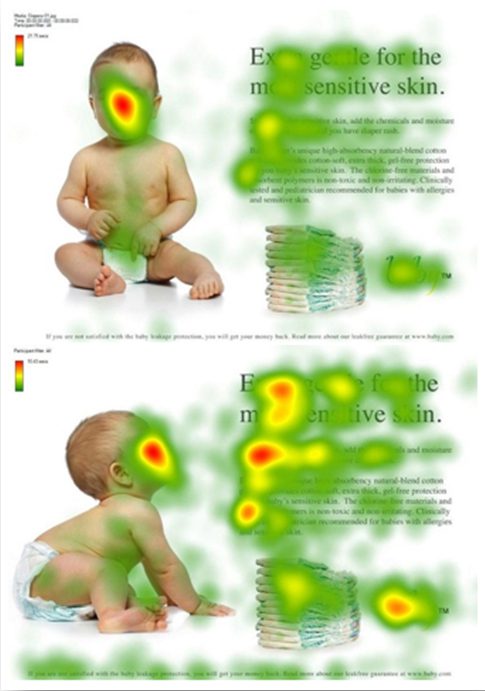Go from CTA to CT-Yay!
Congratulations, you’ve managed to get people to your website! Now it’s time to bring it all home with a CTA (call to action) that closes the deal.
Before you go celebrating your grand success, it’s important to understand exactly what makes a good call to action, and how essential it is in the sales process. The truth is, a good CTA can close the deal on a consumer that wasn’t even sure they were ready to buy. A poor CTA can drive customers away faster than you can blink.
So how do you craft a winning call-to-action?
What is the Value?
Before even thinking of your call to action, you need to think about the value that you are offering a consumer. Last week, we talked about crafting a value proposition, and this goes hand-in-hand with your call to action. You could have the best CTA on the planet, but if you aren’t offering the right incentive and showing what makes your product unique and valuable, you aren’t going to get the sale.
Your very first step is to analyze your offer, determine what’s valuable, and relay that to the consumer (refer back to last week’s blog if you’re struggling with your value proposition).
Once you’ve got that figured out, it’s time to get down to business!
Know Your Call to Action Goal
The number one objective to consider when coming up with your call to action is what is the goal you are trying to achieve? If you are looking to sell a product, the obvious answer is to get them to add it to their shopping cart.
If you’re looking to get more names in your contact database, you’re most likely trying to get them to subscribe to some form of content. Whatever your goal, you need to make sure that your CTA is clear, concise, and in alignment with your primary objective.
Too Many CTAs Spoil the Broth
One of the biggest mistakes marketers make is offering competing calls to action. When a consumer is looking to make a purchase, they want a clear, concise next step.
There are situations where multiple offers make sense. For instance, if your product or service has a high level of consideration or a long buying cycle. In this case, a secondary CTA that leads to additional information could help consumers make a more informed decision, as opposed to just the hard sell.
Another example would be if you have multiple goals for your web page. While a sale is often the goal, many retailers have secondary goals of getting more subscribers to their list or blog. In this case, a secondary CTA makes sense on a web page where you aren’t strictly trying to sell something.
However, on a product page, where the consumer has gotten the info they need to make a purchase, multiple CTAs are a quick way to confuse potential customers and tank your conversion rate. Focus on your one main objective, which is making the sale.
Location, Location, Location

Another important decision when working on your call to action is the placement on the page. When you’re trying to sell something, it almost always makes sense to explain what the product is, what the advantages are, and why someone should buy it before asking the consumer to take the next step.
You should also consider how important it is to keep your CTA “above the fold”. This means that a user won’t have to scroll down the page to find it. For a low consideration item, keeping the CTA above the fold makes sense. For products or services with longer buying cycles, there is a bit more leeway, as consumers are usually looking for as much information as possible to make an informed decision.
Lastly, the images on your page can have a big impact on where you place your CTA. For instance, look at the example to the right:
Notice how the image on the right has the baby’s face looking straight ahead? Consumers are drawn to images of people, hence why the you see the red of the heat map so prominent on the face of the baby.
However, if we are able to use an image of a baby looking in a certain direction, users will instinctively follow the path of the baby’s eyes. This is a great way to focus visitors on your content and have them follow a natural path directly to your CTA, which can have a huge impact on conversions.
The Impact of Smart Design
Another factor to consider with your call to action is the way it looks and the way it fits on the page. You want your CTA to stand out as much as possible. You want it to be incredibly easy for your visitors to find it.
One way to accomplish this is to use negative space around the CTA to make sure that it stands out as much as possible. By giving the call to action a little buffer, you’re allowing it to jump off the page as the clear next step.
Additionally, the color of your CTA is very important. You want the color to stand out from other elements of your page. For instance, if your website is primarily white and blue, you probably don’t want your call to action to be that same color blue. Changing the color to orange, red, or green will make it stand out and be noticed.
Pro-tip: The color of your button can have a big impact on your conversion rate, so feel free to run some split tests with multiple colors to see which one resonates the best with your website visitors.
Having the Right Message
Finally, with all of these factors carefully considered, it’s time to craft the actual text that goes into your call to action. The text you use should be very dependent on what you’re selling or offering, and should also match the style or branding of your website.
If your site offers a humorous take on your products or services, a CTA that plays off of that humor might have a big impact.
For example, one of our ROI Revolution clients was looking to optimize their call to action. They were using “Buy Now” on their buttons, but based on their website experience and their products, it made more sense to test an alternative.
“Add to Bag”, a CTA with slightly less commitment, was used in a split test. The result was a 9.6% lift in add to cart rate with the new call to action. Not only did this variation boost conversions, but it also grew the number of visitors eligible for abandoned cart remarketing campaigns.
If your goal isn’t a direct sale, there is a lot of opportunity to be creative and think outside the box. For instance, if you’re trying to get people to sign up for a newsletter, using “Subscribe” seems to be the standard.
However, something a little more refined, such as “Subscribe for Exclusive Updates” could be more effective. This informative, more detailed CTA has the opportunity to get more visitors to sign up because they have a better idea of what they’re getting out of it.
Tying it All Together
Crafting a compelling CTA is essential in the conversion process. A wrong move here can lead to a high bounce rate and a low conversion rate. Careful consideration of messaging, placement, design, and goals are all necessary in the optimization process.
Now that you’re a call to action expert, it’s time to think big picture. We’ve just released an excellent special report with additional details on optimizing your website conversions. Grab The Q4 Conversion Rate Challenge now to uncover even more tactics to optimize your value proposition, improve your CTAs, and determine the best tests to grow your sales and revenue.




